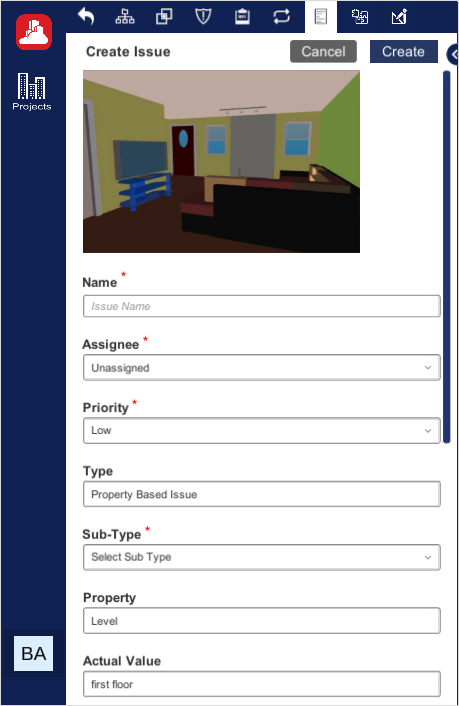Working with Issues
We can view all the issue information and edit the details if required. Now follow the below steps to work with issues,
- On the creation page, the below fields are available for Issue Creation. The table below will explain all the fields within the issue

Working with Issues
|
Issue Fields |
Description |
|
Name |
Name of the issue which is defined by the user |
|
Status |
Current status of the Issue defined by the user |
|
Priority |
Priority is categorized into three types: low, medium and high which derives the important |
|
Assignee |
Who has taken the Issue and resolved which is defined by the user |
|
Source |
It expresses the origin state from Model Viewer |
|
Type |
Shows the type of Issue |
|
Sub-Type |
Shows the sub-type of Issue |
|
Start Date |
Starting date of the Issue which is defined by the User |
|
End Date |
Estimated date of Issue which is defined by the User |
|
Created |
Shows the Issue creation date |
|
Updated |
Shows the last updated date of the issue |
|
Description |
Explain the information/remarks about Issue |
|
Attachments |
Uploading of Issue files or related files |
|
Upload Image |
Upload the exact issue image for reference |
|
Remove Image |
Removing the Uploaded Issue Image |
|
Comments |
Express the text to help other users to understand Issue |
|
History |
Option to knowing the past activity that happened within the Issue |
|
Property Name |
It is only available in Property Based Issue, that shows the name of the Property |
|
Actual Value |
It is only available in Property Based Issue, that shows the Actual value of the Property |
|
Expected Value |
It is only available in Property Based Issue, to mention the desired value of the Property |
|
Clash Points |
It is only available in Clash Based Issue, which shows the details of the clash |
Overview Issue Parameter
Created with the Personal Edition of HelpNDoc: Don't be left in the past: convert your WinHelp HLP help files to CHM with HelpNDoc